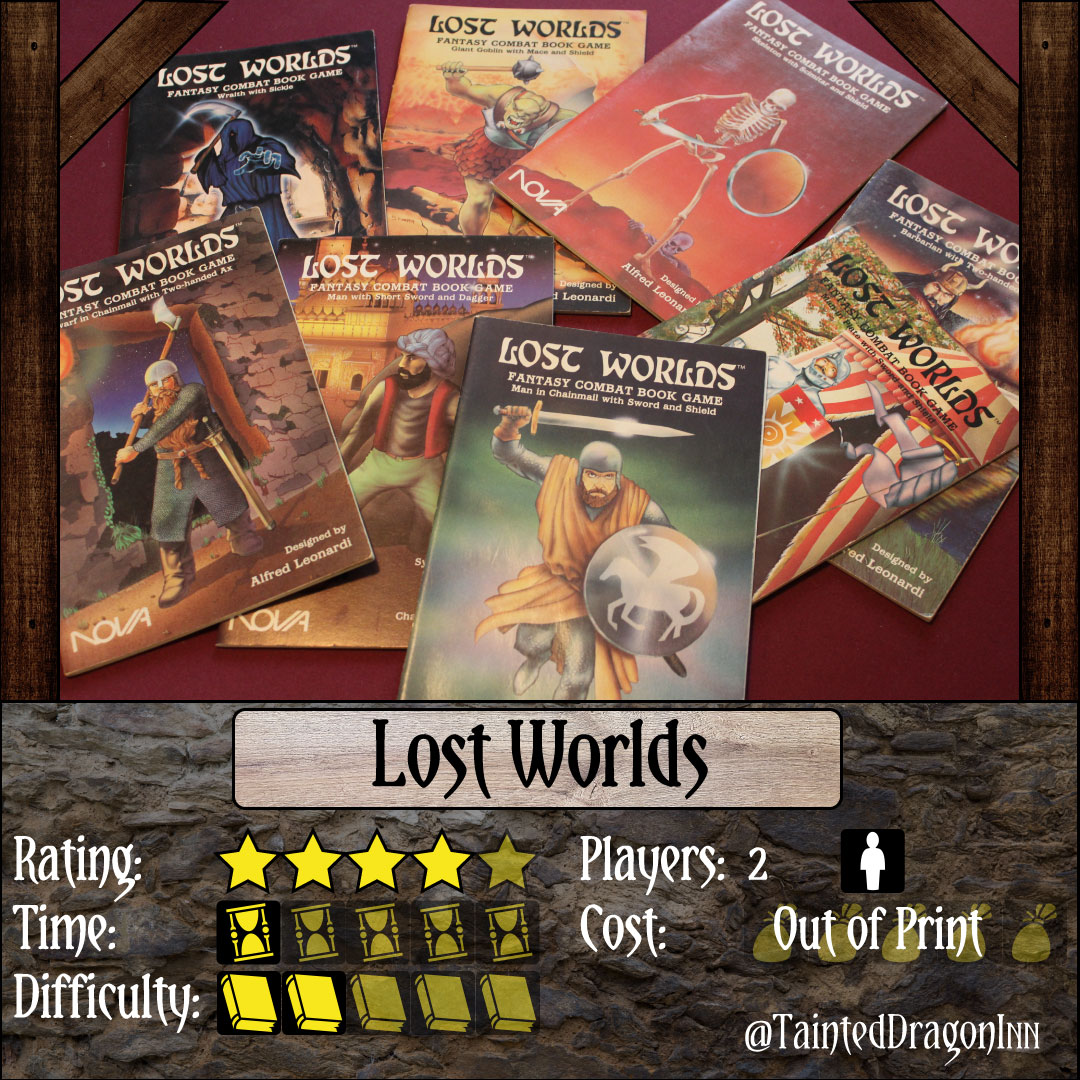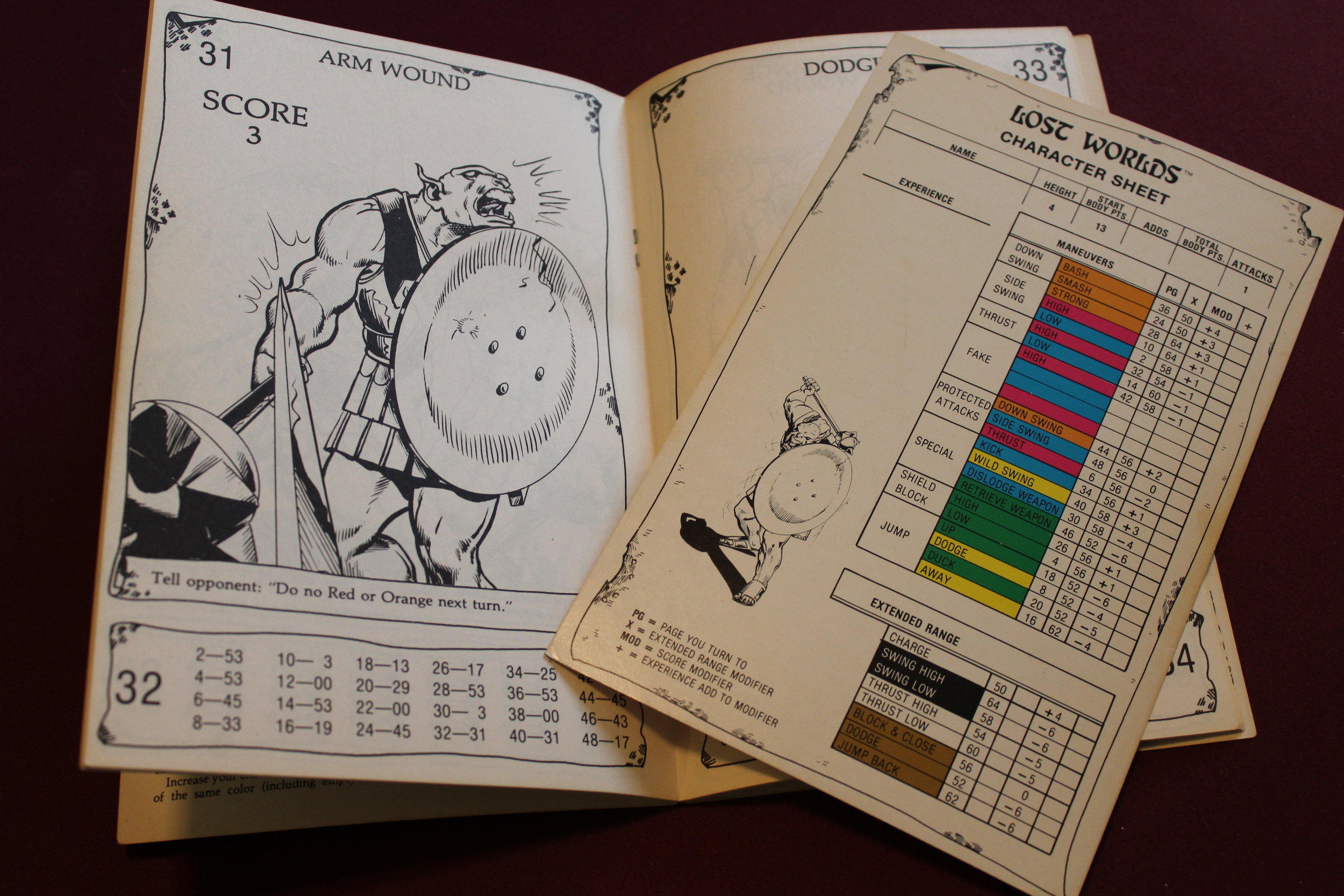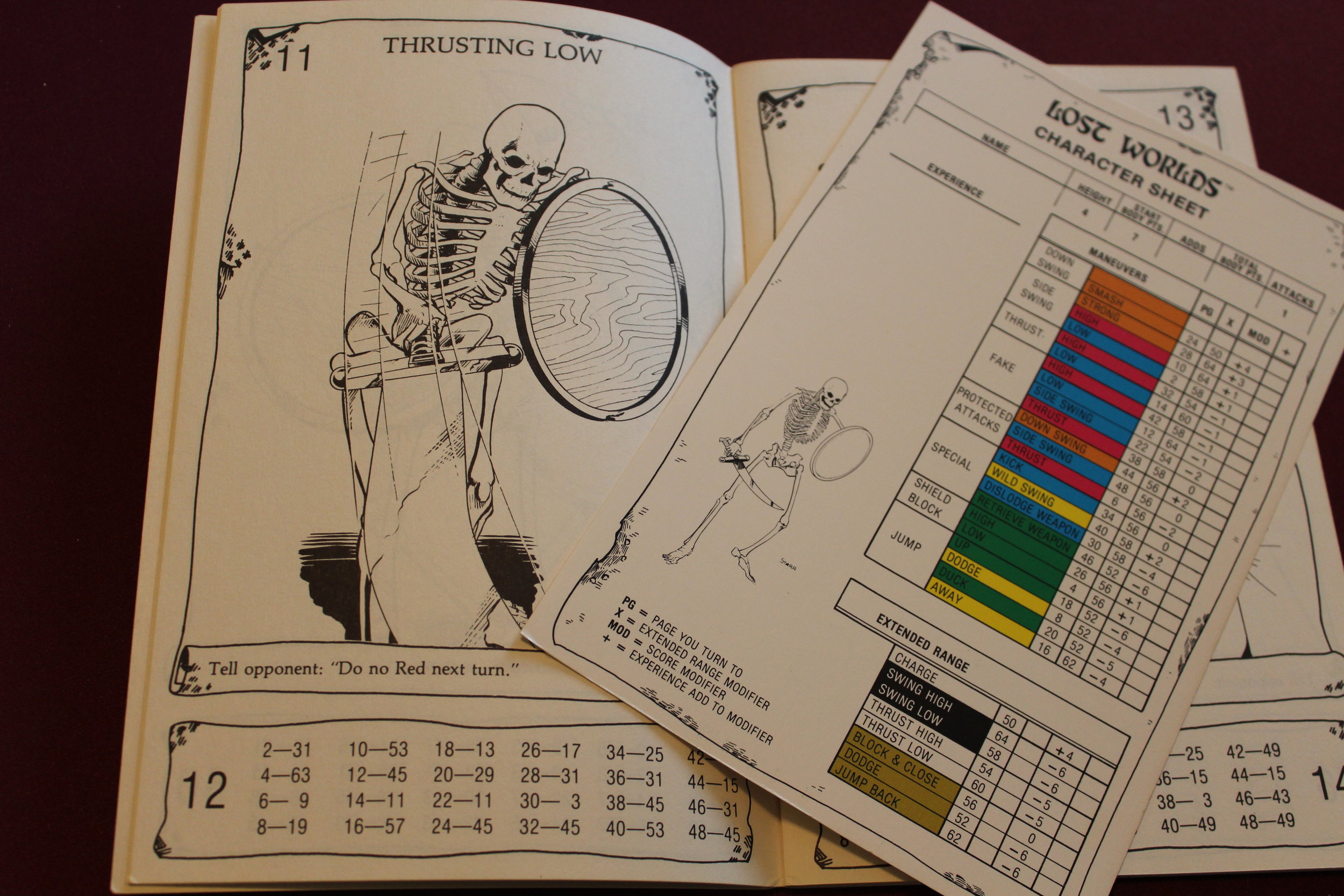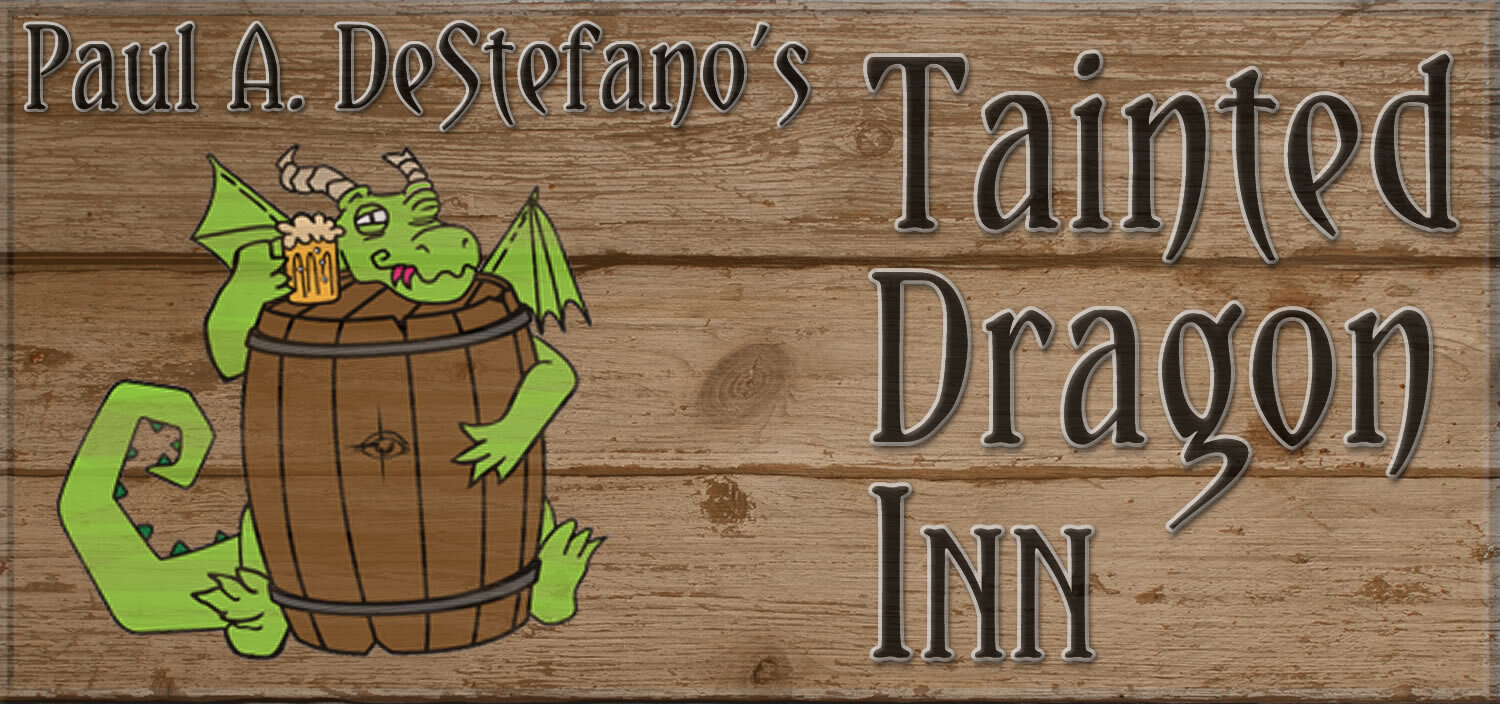Lost Worlds
/


Nova started this game, and it should have ended there as well.
I will not refer to any of the 'related' releases, or ones by other publishers here, because they break the beauty and elegance of this game with rules that are not only unusable, but impossible to decipher.
(My one example - If I have a positive 2 modifier and you have a negative 3 base score, but the page says multiply damage by two, is it (-3)+(+2)=(-1)*2 for a total of -2, or (-3)+(+2*2) for a total of 1? Is the damage to total or the modifier? What if other modifiers applied - do they get modified - thanks for leaving that out of the rules and not answering my emails)
So, this review goes under the assumption that the game consists only of Nova Lost Worlds titles. Not Runesword. Not Chessex or Flying Buffalo Lost Worlds. Nova Lost Worlds.
The game is a brilliance of design for simulating man to man (creature?) combat.
I have the book, say Skeleton with Scimitar And Shield. You have Goblin with Mace and Shield. I have a control card showing me all of my moves, color coded and broken down by type. I hand YOU my book. You hand me yours. Now I see your goblin, you see my skeleton.
We are at Extended range. We look into our move charts, find Extended range. I'm just a fairly week skeleton, your a burly goblin. I decide to thrust low, hopefully stopping you from charging me. I go to the page number next to thrust low. You turn to the page of your move. I tell you my page number, you tell me yours. We cross reference and go each to new pages, showing that I did a thrust low (you see the skeleton thrusting, and I see you dodging (You were afraid I would try that). Your dodge gives you an advantage to certain attacks next turn. A combo setup.
BUT
If I had the barbarian with 2-handed sword, and you had the halfling, things might very well be different, even with the same moves.
See, a character card defines his maneuvers - some characters are agile and can do A LOT of different moves each turn. Some are very restricted. Your card tells your hit points - had I scored on you, we would add the score on that specific SCORE page, and modify it by my move modifier and subtract damage. It also has the Damage modifier. Strong guys with big weapons do more damage.
The booklet, on the other hand, handles armor. If you hit an armored man in the leg, the base score might be 2. Unarmored might be 5. It also has restrictions. If you swing a mace down, the next move cannot be a high thrust. But if it were a fast weapon like a dagger, no such restriction. It also has the intangible... The move matrix. Sometimes a Smash against a character doing a High Thrust hits. Sometimes it doesn't. Depends on the character interaction.
The skeleton has 7 hit points. Goblin 13. But that skeleton is FAST. AND, if he successfully ducks without being scored upon - he regenerates a point (picking up a bone).
So, hit points and number of moves are obvious. Strength is obvious. Armor can be seen by flipping through the book, and restrictions can be deduced. But what would normally be called the "to hit" roll in a game like this is... kind of hidden until play.
Even eliminating all of the future "expansions" of incredibly badly balanced characters which introduce indecipherable rules, there's hundreds of combinations in the base 18 or so booklets. And certain combos beg to be replayed a few dozen times.
Other things like height and multiplayer combat as well as a very cool, if slightly unbalanced, campaign system are also introduced. (Flaw in campaign system - its based on body points defeated. If a skele kills 2 goblins, he can get 3 bonuses. If a gob kills 2 skeles, he can get 1 bonus, yet these characters were balanced to begin with)
The art varies WILDLY, especially later in the series. The characters vary in difficulty of play. At times, weak characters really shine in a glorified rock-scissors-paper type quirk. And the Troll and Drake of the original series are NOT balanced for single player play.
Once you understand the page matrix mechanism, you basically have a first person fighting videogame, without the electricity.
And the result is an intoxicatingly cool tactical guessing game. Kind of like really sparring.
TLDR: Computerless First Person combat


